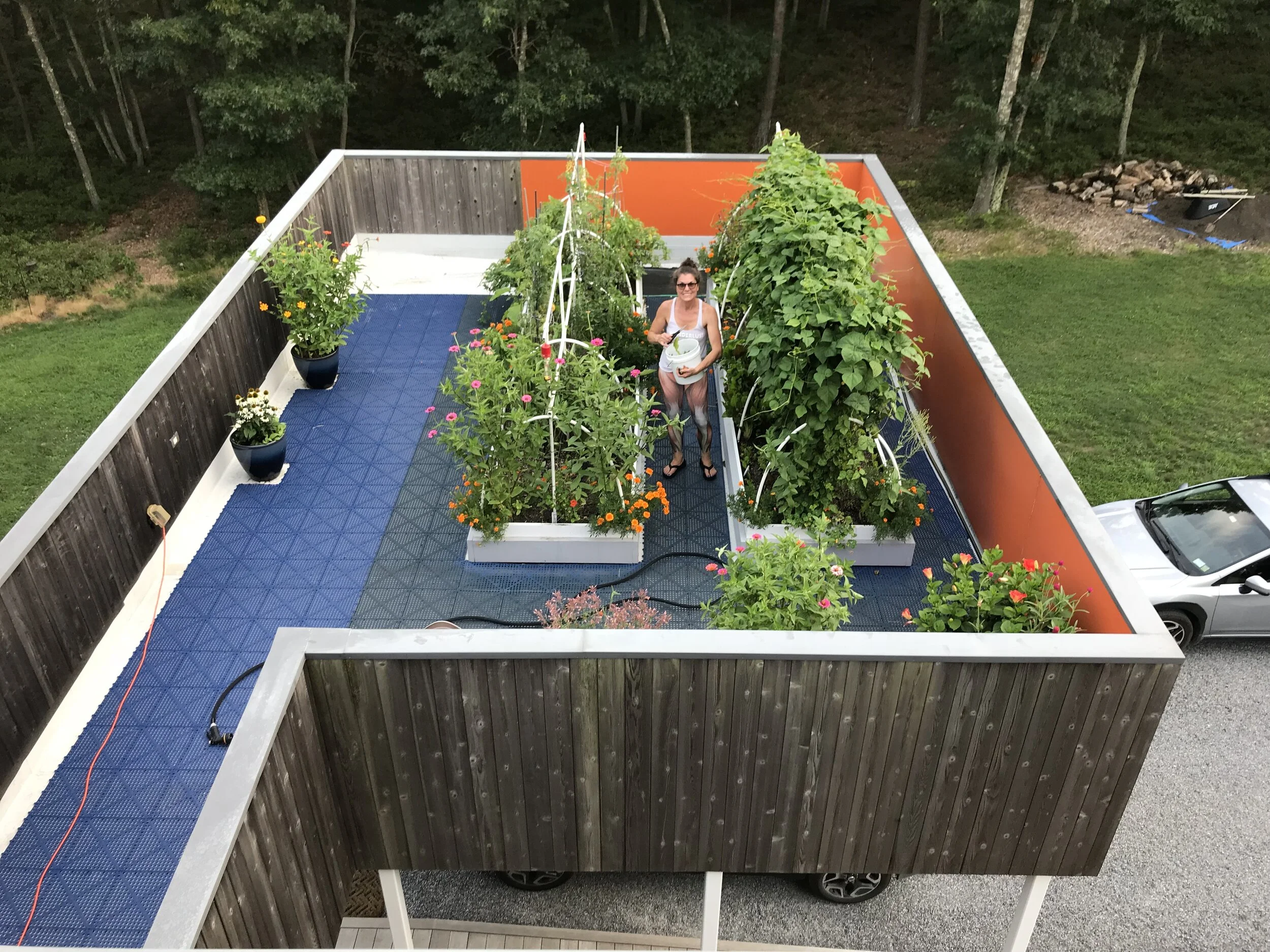Summer Harvest Caponata
/While my father’s fig tree at his home in East Quogue, New York is being sun-kissed by the glorious days of late summer and we await the next fig bonanza harvest, the black beauty and Hansel eggplants in his garden are in clusters and purple bounds, waiting to be picked for a summer harvest caponata.
Black beauties are large and bell-shaped: my choice when making Melanzane alla Parmigiana (eggplant Parmesan) and one of the many Italian dishes I grew up on. But when it comes to caponata, a popular Sicilian condiment whose main ingredient is eggplant, I break a few rules that I hope will not make my grandparents roll and grumble in their grave.
During the holidays my grandparents would make a caponata with the consistency of a dark brown relish; it tasted sweet and savory. This would accompany the antipasto: cured meats, olives, pickled vegetables and mushrooms, artichoke hearts, hot peppers, fennel, various cheeses and crispy Italian bread. A meal-like portion of this relish on a piece—or two—of bread with a chunk of salty provolone cheese, delicioso!
I recreated this Italian delicacy from my childhood with a few twists. I use the young Hansel eggplants that are tender, slender and less bitter than the black beauty variety, roasted instead of fried, and with the addition of cherry tomatoes to highlight the late summer harvest.
The only grumbling I hear from below is my stomach hungry for some caponata.
Summer Harvest Caponata
ingredients
- 2 pounds of Hansel or slender eggplant, cut into 1/2-inch cubes.
note: you can use any variety of eggplant available to you. - Sea salt and pepper
- extra-virgin olive oil
- 1 large onion, chopped
- 1 pound of cherry tomatoes, cut in half
- 3/4 cup pitted green olives, roughly chopped
- 3/4 cup celery ribs and fronds, thinly sliced
- 3 tablespoons capers
- 3 tablespoons of toasted pignoli nuts
- 2 tablespoons of red wine vinegar
- 1 tablespoon of natural sugar
- 3 tablespoons of water
- 3 tablespoons of tomato paste
- 3 tablespoons of basil, chopped
directions
- Place the eggplant on one baking sheet and the cherry tomatoes on another. Drizzle both with 3 tablespoons of olive oil and 1 tablespoon of sea salt. Place in a 400° oven and bake for 30 minutes or until tender; set-aside.
- Lightly toast pignoli nuts in a small frying pan until fragrant; set-aside.
- Meanwhile, in a large dutch oven pot or large pan, heat 3 tablespoons of olive oil over medium-high heat. Add onion, stirring occasionally, until onion softens, about 5 minutes. Then add the celery and cook for, 5 minutes. Add tomato paste and cook for, 2 minutes. Add water to pan and stir until incorporated.
- Then gently fold the eggplant into the pan mixture and cook for, 2 minutes. Add the roasted cherry tomatoes, capers, olives, vinegar, sugar, 1 tablespoon of salt and 1 teaspoon of pepper; fold in gently and cook for, 2 minutes. Then add the toasted pignoli nuts, basil and gently fold in.
- Remove from heat; let cool completely.
Note: Caponata keeps for up to one week refrigerated. Bring to room temperature before serving.
Serving suggestions
Perfect as a crostini or to accompany a charcuterie and cheese plate.
Complements fish or chicken beautifully. Shown below is Dock to Dish line caught Golden Tilefish from Montauk.



























